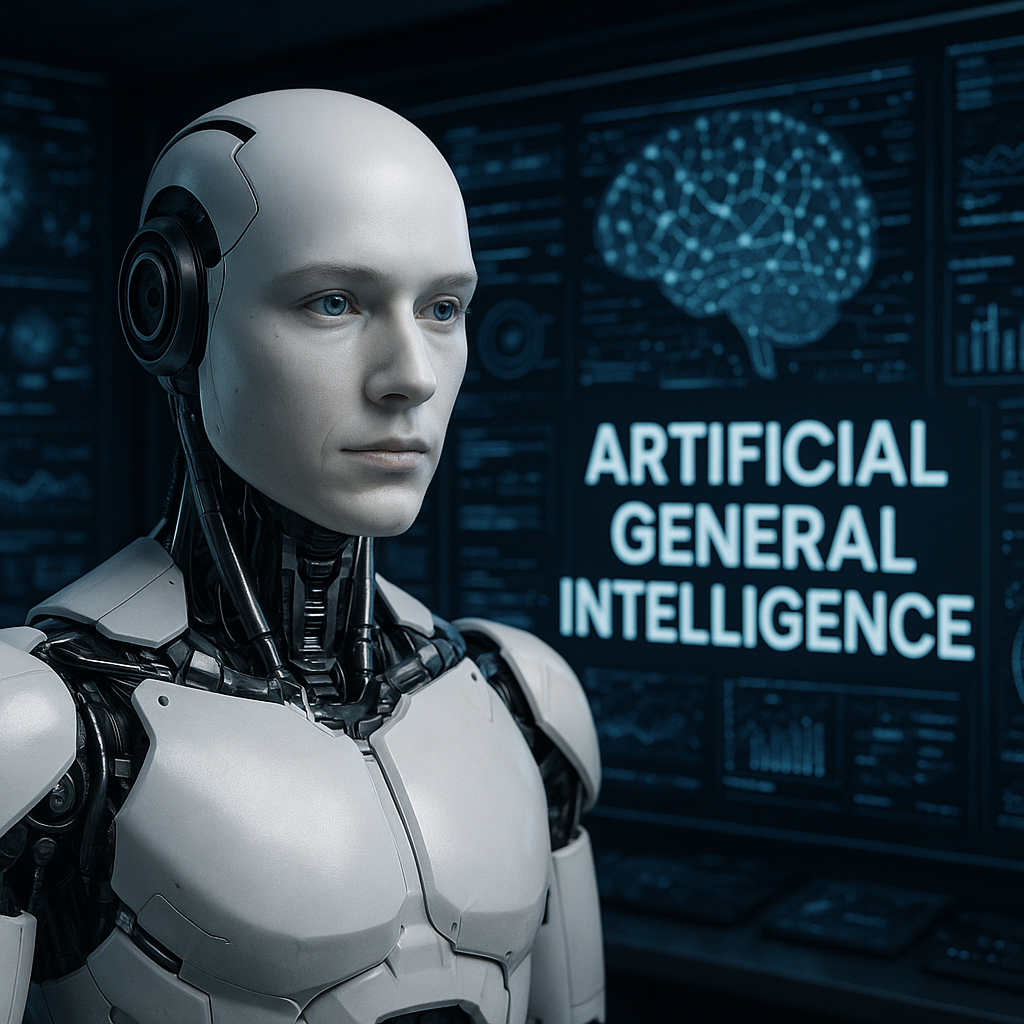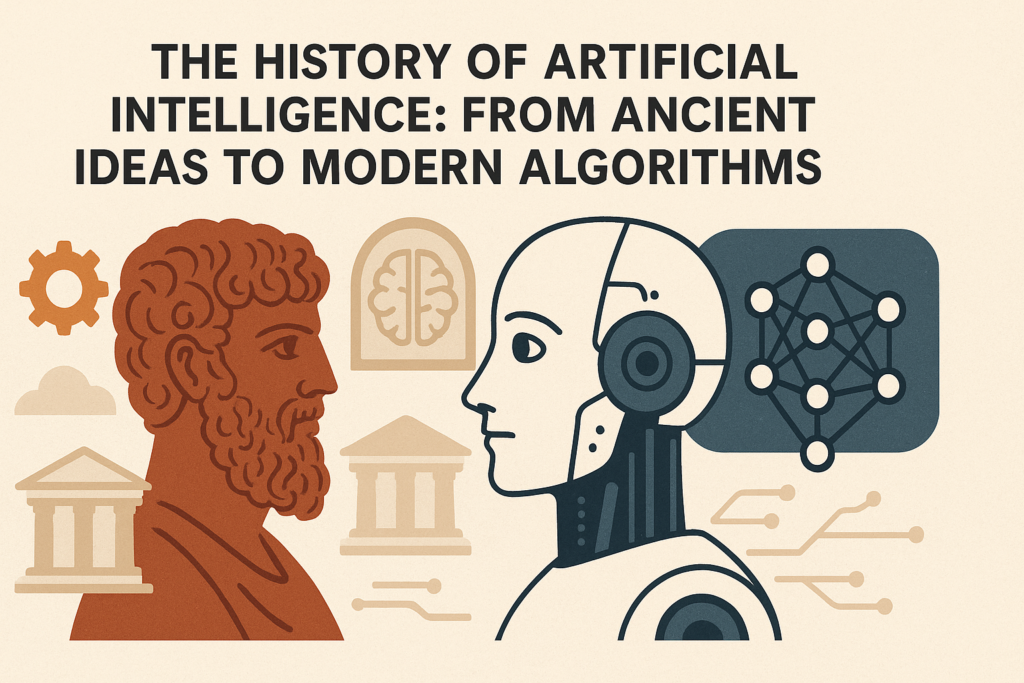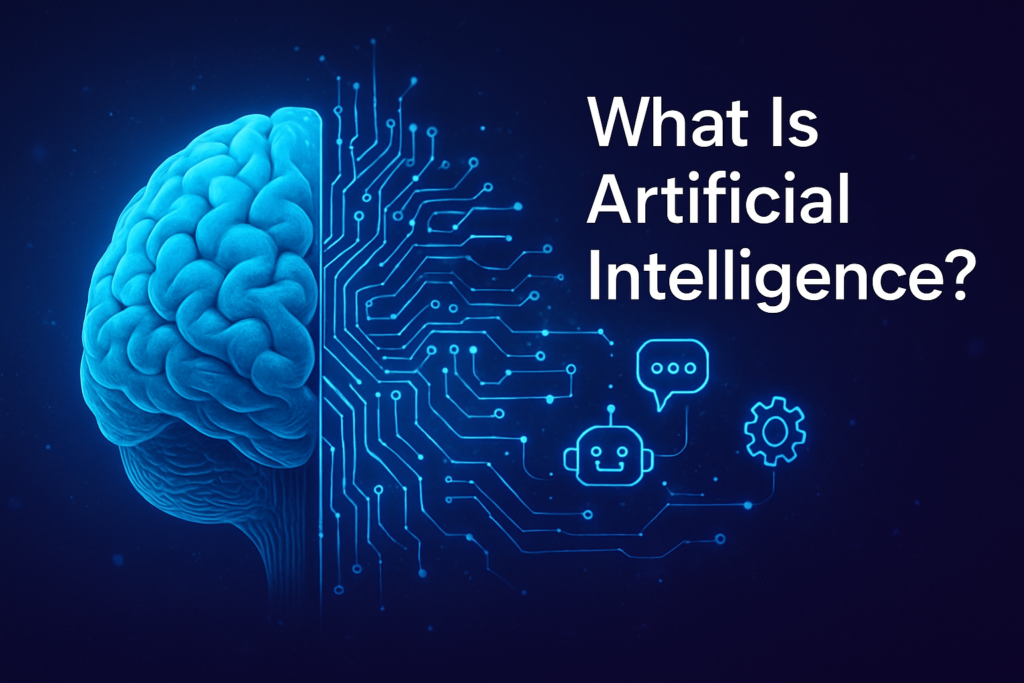Artificial General Intelligence (AGI): The Path to Human-Level AI
Artificial Intelligence (AI) has made remarkable strides over the last few decades, particularly in narrow or specialized applications. From AI systems that can play chess and Go better than the best human players, to self-driving cars that navigate through traffic, we’ve seen significant advancements. But all of these applications are examples of narrow AI systems designed to perform specific tasks with high competence. The next frontier in AI development, however, is Artificial General Intelligence (AGI), a system that aims to replicate human cognitive abilities across a wide range of tasks.
AGI is sometimes referred to as strong AI or full AI, and it represents the next leap in the evolution of intelligent machines. While narrow AI excels at tasks within defined domains, AGI would be capable of understanding, learning, and applying knowledge across multiple areas, just as a human can. This level of intelligence would not only perform specific tasks well, but also understand context, reason abstractly, learn from experience, and adapt to new situations.
In this blog, we will explore the concept of AGI, its potential, the challenges associated with developing it, and its implications for society.
What is Artificial General Intelligence?
Artificial General Intelligence refers to AI systems that exhibit human-like cognitive abilities. Unlike narrow AI, which is designed to handle a specific problem, AGI is intended to solve a wide array of tasks with the flexibility and adaptability that humans demonstrate. In essence, AGI would possess the ability to think abstractly, learn from experience, generalize knowledge, and use reasoning to navigate different contexts.
At its core, AGI is about creating a system that can:
- Understand a wide variety of tasks: Whether it’s playing a game, writing an essay, analyzing data, or performing a new type of work, an AGI system would adapt to new challenges much like a human does.
- Learn autonomously: AGI systems could learn new skills and acquire knowledge without needing specific programming for each task. They would improve their performance over time.
- Generalize knowledge: AGI would use knowledge from one domain to solve problems in entirely different domains, a trait that narrow AI systems lack.
- Perform abstract reasoning: AGI would be able to solve complex problems that require deeper understanding and creative thinking.
While narrow AI has made extraordinary progress, the leap to AGI involves creating an intelligence system that is not confined to one domain and can mimic human-like versatility and understanding.
The Journey to Artificial General Intelligence
The development of AGI requires not only advancements in technology but also a better understanding of human intelligence itself. Researchers are still exploring how the human brain works, and while we have made progress in fields like cognitive science, neuroscience, and machine learning, we are far from fully replicating the depth of human cognition in machines.
The development of AGI typically progresses through several stages:
- Early AI Systems: These systems were based on rule-based logic and symbolic reasoning, where machines followed predefined rules to make decisions.
- Machine Learning: In the 21st century, AI systems began learning from data through techniques like supervised and unsupervised learning, revolutionizing the capabilities of AI.
- Deep Learning: The advent of deep learning algorithms, such as neural networks, allowed machines to learn from vast amounts of data and perform tasks like image and speech recognition with impressive accuracy.
- Reinforcement Learning: AGI could rely on reinforcement learning (RL), where agents learn to perform tasks by interacting with their environment and receiving feedback, gradually improving their ability to make decisions.
- Hybrid Models: Future AGI may integrate various AI models, from symbolic AI to neural networks and deep learning, to develop more general capabilities.
Researchers in the AGI field are still in the early stages of understanding the best ways to create an intelligence system that can generalize across a wide variety of tasks, much like humans do. Current AI systems are still highly specialized and limited to the domains they are designed for.
How Does AGI Differ from Narrow AI?
The most significant difference between AGI and narrow AI is the level of flexibility and generalization that AGI can achieve. Here’s a comparison:
Aspect | Narrow AI | AGI |
Scope of Tasks | Specialized, task-specific | General, can perform many tasks |
Learning | Task-specific learning | Can learn across domains |
Adaptability | Limited to predefined tasks | Adapts to new situations |
Problem-Solving | Solves specific problems | Can solve novel, complex problems |
Creativity | Limited to predefined algorithms | Capable of creative problem solving |
Reasoning | Task-specific reasoning | General reasoning across domains |
Narrow AI is incredibly powerful within a single domain but struggles to operate outside of its design. AGI, on the other hand, would be able to learn and apply its knowledge in a broad range of domains, much like the way humans can solve a variety of unrelated problems.
Potential Applications of AGI
AGI holds immense promise in transforming almost every industry. Its potential applications are vast and can significantly affect sectors such as healthcare, education, entertainment, finance, and more. Below are a few potential benefits:
Healthcare:
- Personalized Medicine: AGI could analyze vast amounts of medical data and provide personalized treatment plans tailored to individual patients. This would include diagnoses, recommending therapies, and predicting patient outcomes with high accuracy.
- Drug Discovery: With AGI, drug discovery could be sped up significantly. By understanding complex molecular biology, AGI could suggest new drugs and therapies faster than human researchers.
- Robotic Surgery: AGI-powered robots could perform surgeries with precision, adjusting to complex conditions in real-time and offering higher accuracy than human surgeons.
Education:
- Personalized Learning: AGI systems could serve as personalized tutors, adjusting teaching methods to suit individual learning styles. They could also provide feedback in real-time, helping students at every stage of their learning.
- Automated Content Creation: AGI could generate educational materials, quizzes, and learning plans automatically, freeing up time for instructors to focus on student engagement.
Transportation:
- Autonomous Vehicles: AGI could transform the future of self-driving cars by enabling vehicles to understand and make decisions in complex, ever-changing environments.
- Traffic Management: AGI could optimize traffic flow by controlling signals, routes, and even public transport schedules based on real-time data analysis.
Finance:
- Advanced Financial Analysis: AGI could analyze massive amounts of financial data to identify market trends, investment opportunities, and economic forecasts.
- Risk Assessment: By considering numerous variables, AGI could offer a more sophisticated risk assessment model for investments and insurance.
Entertainment:
- Creative Content Generation: AGI could write books, compose music, or generate artworks, opening new possibilities in creativity and content production.
Interactive Games: AGI could create games that adapt and evolve with players’ actions, providing dynamic storytelling and personalized experiences.
The Challenges of AGI Development
Despite the enormous potential of AGI, there are significant hurdles to overcome in its development. These challenges are not just technical, but also ethical and philosophical.
Technical Challenges
- Understanding Human Intelligence: One of the biggest challenges is replicating the depth of human intelligence. While AI has excelled in certain tasks, we still don’t fully understand how human intelligence works. The brain is incredibly complex, and creating algorithms that can mimic its capabilities is a monumental task.
- Transfer Learning: AGI needs to learn to transfer knowledge from one domain to another. Current AI systems excel within a narrow domain but struggle to apply what they have learned in one context to a new one.
- Commonsense Reasoning: One area where narrow AI systems fail is in commonsense reasoning — understanding everyday facts about the world that humans take for granted. AGI would need to possess this ability to navigate the world effectively.
Ethical and Societal Challenges
- Job Displacement: AGI could lead to massive job displacement as machines take over tasks traditionally performed by humans. This could have profound economic and social implications.
- Control and Safety: Ensuring that AGI operates safely and aligns with human values is critical. There are concerns that an AGI system might act in unpredictable ways, potentially harming humanity.
- Ethical Decision Making: AGI systems would likely face moral and ethical dilemmas, particularly in fields like healthcare or law enforcement. Defining the ethical guidelines for AGI will be a major challenge.
Bias: Like current AI, AGI could inherit biases from the data it learns from, leading to unjust outcomes if not carefully managed.
The Future of AGI: Hope or Hype?
While AGI holds great promise, we are still far from achieving it. Many researchers believe it could take decades, if not longer, before AGI systems are realized. However, as machine learning and computational power continue to advance, the possibility of AGI grows more realistic.
The development of AGI is not just a technological challenge but a societal one. Governments, research institutions, and tech companies will need to work together to ensure AGI is developed responsibly. Researchers are also calling for a global conversation about the potential risks and benefits of AGI, with a focus on creating safety measures and ethical guidelines.
Conclusion
Artificial General Intelligence represents the ultimate goal of AI research, where machines are capable of performing a wide range of cognitive tasks at a human level. While the development of AGI is still in its infancy, its potential impact on society is vast and transformative. The promise of AGI includes solving complex problems across industries, automating labor-intensive tasks, and accelerating scientific discovery.
However, the road to AGI is filled with technical, ethical, and societal challenges. As we move forward, it will be critical to ensure that AGI is developed in a way that aligns with human values, mitigates risks, and ensures that its benefits are distributed equitably. While AGI may still be years or even decades away, its development will shape the future of technology and society in ways we can scarcely imagine today.



